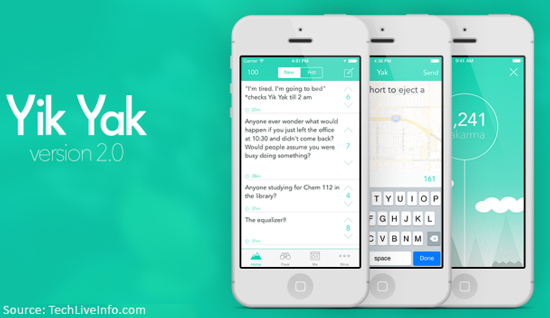How Millennials Are Changing Social Media’s Future
Two-thirds of people who have access to the internet are using social media. With an estimated 3,631,124,813 internet users by June 2016 and growing daily, the world is getting switched on and more than 2 billion of us are communicating across the globe through social networks. There are 12 new users signing up for accounts every single second, in hundreds of countries. Whether those networks are used for business or for leisure, they offer a huge range of benefits to individuals and companies.

Which are the leading social networks today?
Ebiz MBA recently revealed the latest figures for social media usage, and Facebook still remains at the top with over one billion active accounts. Close on its heels is Google’s video sharing platform YouTube, while Twitter is lagging behind the pack:
1. Facebook: 1,100,000,000 members
2. YouTube: 1,000,000,000 members
3. Twitter: 310,000,000 members
4. LinkedIn: 255,000,000 members
5. Pinterest: 250,000,000 members
Reports suggest that other social networks, including Instagram, Snapchat and Reddit, are starting to disrupt the social media landscape and affect those key players’ markets. The future of social media is likely to look very different to the world of online networks we use today.
New social networks that could change how we communicate
Social media is nothing new: back in the early days of the internet, there were sites like MySpace which allowed people to share personal information and link up with their contacts. However, it was not until the birth of Facebook, with Twitter hot on its heels, that we saw a real growth in demand for social media sites. Today, there are new network start-ups appearing every day. Many will fade into obscurity before they ever really take off, but some will pick up fans and develop in the same way Facebook and Twitter once did.
In 2016, look out for shopping site Wanelo, which allows users to curate wishlists of products from a huge range of manufacturers, and share products and lists with their friends. Another up coming app is Yik Yak, a locally-based app that allows text, image and video sharing between people in the same vicinity.

Along with these new social networks, the existing social media sites are likely to keep on growing. Snapchat is already exceeding Twitter in terms of daily use, while Facebook’s Instagram, Messenger and WhatsApp services all continue to grow. Flickr and Tumblr are popular as well, showing how social media fans are focusing on images and video content.
Who uses social media?
When social media first burst on to the scene, it was strictly for the younger generation. Internet communication in the early days was carried out in chat rooms or by linking profiles and sharing each other’s DIY webpages. Today, web users of all ages, nations and backgrounds are linking together through social networking. Millennials – the generation aged 25-34 – are still the biggest driving force but other groups are also embracing social media.
Almost three quarters of all adults use some kind of social networking site, and just under half of the over 65 generation is logging in to these channels. Women are more likely to use almost all social media sites than men: Twitter and LinkedIn are the exceptions to the rule. The balance on LinkedIn is relatively even, while men outnumber women in the ‘Twitterverse’.

What do people want from their social media networks?
91% of the top retail brands use at least two social media channels, and an estimated 62% of all businesses use at least one form of social media to connect with their customers. Individuals are still the biggest sector of social networks, but businesses make up a big sector of these sites’ membership. This commercial content actually gets a higher level of response from an older audience; people aged between 55 and 64 are twice as likely to interact with brands content as people aged under 28.
Video is the fastest growing content type, and is expected to account for the majority of all internet traffic over the next few years. Sites offering fast access to video are proving the most popular among just about every demographic. Sharing content, whether it is personally uploaded or comes from another source, is by far the biggest reason people use social media today. Personal thoughts and ‘status updates’ are less common posts: circulating interesting articles, news stories and pictures has overtaken this function. Perhaps this explains why Twitter has declined, while Snapchat, Pinterest and Instagram have seen strong growth.
Viral content is still key to successful social networking. If people use your site to share content with each other, your channel is sure to grow and evolve. Whether users are discussing top movies, posting pictures of their cooking and their meals out, sharing family and pet pics or discussing current affairs and news events, interesting content creates buzz – and it is this hype and interaction which builds strong international social networks.
